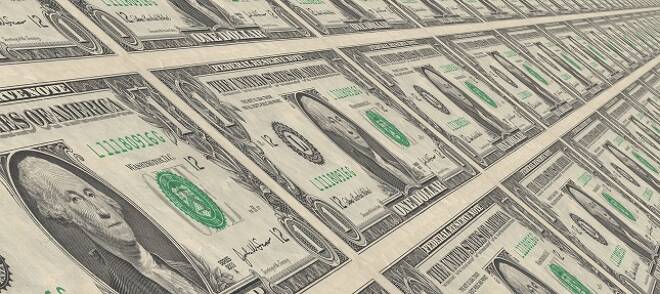Advertisement
Advertisement
Dollar Dips as U.S. Retail Sales Miss Estimate
By:
A Commerce Department report on Monday showed that U.S. retail sales barely rose in September as a rebound in motor vehicle purchases was offset by the biggest drop in spending at restaurants and bars in nearly two years.
The U.S. Dollar was pressured against a basket of currencies on Monday after a government report showed retail sales data for September missed economists’ expectations. The dollar also lost ground as U.S. Treasury yields tightened after hitting multi-year highs last week.
Safe-haven currencies like the Japanese Yen and Swiss Franc also posted gains against the U.S. Dollar on Monday as European stocks tumbled to 22-month lows. Rising tensions between Western powers and Saudi Arabia also factored in to yesterday’s weakness.
U.S. Economic Data
A Commerce Department report on Monday showed that U.S. retail sales barely rose in September as a rebound in motor vehicle purchases was offset by the biggest drop in spending at restaurants and bars in nearly two years.
The government report showed retail sales edged up 0.1 percent last month after a similar gain in August. Economists were looking for an increase of 0.6 percent in September. Retail sales in September rose 4.7 percent from a year ago.
The so-called core retail sales jumped 0.5 percent last month. This report excludes automobiles, gasoline, building materials and food services and most closely corresponds with the consumer spending component of gross domestic product.
Additionally, data for August was revised down to show core retail sales were unchanged instead of the previously reported 0.1 percent gain.
U.S. Treasury Market
U.S. Treasury yields rose on Monday but remained below last week’s highs. Although yields have been consolidating since last week’s surge, they remain within striking distance of multi-year highs. Last week, a spike in yields raised fears that higher borrowing costs would slow the economy.
The benchmark 10-year Treasury yield finished at 3.165, up 0.002, while the 30-year Treasury yield settled at 3.343, up 0.002.
Yields edged higher despite further weakness in U.S. equity markets. Last week, rates retreated from their highs as investors sought the relative safety of the government debt market during the height of a steep plunge in U.S. stock markets. Additionally, weaker-than-expected retail sales data may have limited gains.
Gold
The weaker U.S. Dollar and safe-haven buying drove gold prices higher on Monday. Over the short-run, gold traders have stopped treating gold as an investment, and have turned to it for safety during the current stock market turmoil.
As an investment, gold is viewed as an undesirable assets because it doesn’t pay interest or a dividend. However, as a safe-haven asset, it is being viewed as a store of value. This is driving investors to buy it as demand for stocks erodes.
On Monday, December Comex Gold settled at $1230.30, up $8.30 or -0.67%.
About the Author
James Hyerczykauthor
James Hyerczyk is a U.S. based seasoned technical analyst and educator with over 40 years of experience in market analysis and trading, specializing in chart patterns and price movement. He is the author of two books on technical analysis and has a background in both futures and stock markets.
Advertisement
